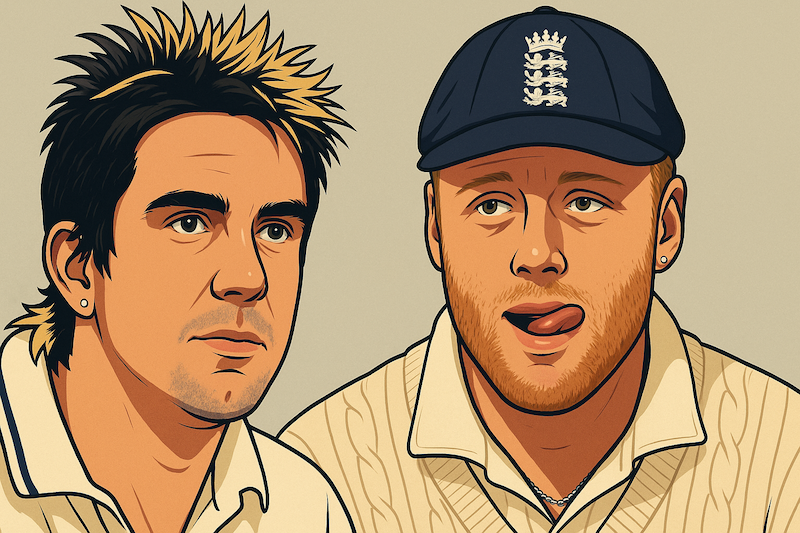
Flair, finesse, and fearless stroke play — Aravinda de Silva was Sri Lanka’s first true batting great. From orchestrating their 1996 World Cup triumph to delivering under pressure time and again, he was the heartbeat of a rising cricket nation.
Early Days and First Steps
- Grew up in Colombo with quick hands, sharp reflexes, and a fearless first-ball mindset that shaped his batting identity.
- Made his ODI debut in March 1984 vs New Zealand at age 18, showing early confidence against quality attacks.
- Earned his Test cap the same year at Lord’s, stepping onto the biggest stage while still a teenager.
- Scored his first Test century against Pakistan at Faisalabad, facing Imran Khan, Wasim Akram, and Abdul Qadir.
- Was known as “Mad Max” in his early career due to his aggressive and sometimes reckless batting style.
Evolution: From Flair to Control
- He gradually curbed his early-career recklessness, improving shot selection and showing the ability to bat for long periods without losing his attacking edge.
- At No. 4, he became Sri Lanka’s stabilizer, often walking in during crises and turning repair jobs into match-winning platforms.
- His batting blended elegance and power, cutting and hooking with authority while maintaining discipline against top-class attacks.
- A year with Kent in 1995 is seen as a turning point, where he refined his technique and developed the consistency that marked his peak years.
- He emerged as the player teammates trusted most when early wickets fell, shouldering responsibility with both style and composure.
World Cup 1996: Big-Match Temperament
- He entered the tournament in fine touch and underlined it with a commanding century against Kenya, which stood as Sri Lanka’s highest ODI score at the time.
- In the semi-final against India, he steadied the innings with a composed 66, helping Sri Lanka recover from early losses and secure passage on a volatile night in Kolkata.
- He rose to the occasion in the Lahore final, playing an unbeaten 107 that anchored Sri Lanka’s chase and delivered the country its first World Cup.
- Alongside his batting heroics, he contributed with the ball, taking 3 key wickets in the final, including Mark Taylor and Ricky Ponting, to tilt the game further in Sri Lanka’s favor.
- His all-round brilliance earned him the Man of the Match award in both the semi-final and the final, making him the defining figure of Sri Lanka’s 1996 triumph.
Explore More Stories

2005 Ashes: The Summer Cricket Became Theatre
The 2005 Ashes was more than just a cricket series. It was a rollercoaster of emotion, courage, and unforgettable moments that brought Test cricket back to life. England’s long wait finally ended, and the world watched history unfold.

What Happened to Zimbabwe Cricket? The Rise, Fall, and Fight for Survival
Once they challenged the world’s best, now they struggle to stay afloat. Zimbabwe cricket’s journey from the glory of 1999 to years of chaos and heartbreak is a story of politics, power, and lost pride, and of a nation still dreaming of revival.
Test Match Brilliance
- During the 1st Test at Brisbane in December 1989, Aravinda de Silva announced himself with a brilliant 167 against a fierce Australian pace attack, becoming the first Sri Lankan to score a Test century on Australian soil.
- Two years later, he produced a marathon 267 against New Zealand, a record-breaking innings that set a new benchmark for Sri Lankan batting.
- In 1997, he displayed extraordinary concentration by becoming the first and only player to score twin unbeaten centuries in the same Test, achieving 138* and 103* against Pakistan.
- In his final Test against Bangladesh in 2002, he smashed a rapid double century (206), signing off from the format with a commanding farewell innings.
ODI Consistency and All-Round Value
- He was a trusted middle-order presence who could stabilize an innings under pressure, rotate strike with ease, and accelerate when required.
- His off-spin often provided breakthroughs when frontline bowlers failed, making him a genuine all-round option in one-day cricket.
- In the 1998 Nidahas Trophy, he delivered in crunch situations, including rain-affected games, and finished as the Player of the Series with 368 runs.
- His ODI career spanned nearly two decades from 1984 to 2003, showcasing exceptional longevity and consistency at the highest level.
Career Totals
| Format | Matches | Runs | Average | Centuries |
|---|---|---|---|---|
| Tests | 93 | 6,361 | 42.97 | 20 |
| ODIs | 308 | 9,284 | 34.90 | 11 |
Career Highlights
- The only player to score a century (107*) and take three wickets (3/42) in a World Cup final, achieved against Australia in 1996.
- First Sri Lankan to register a Test double century (267 vs New Zealand, 1991).
- Became the first Sri Lankan to achieve the ODI double of 1,000 runs and 100 wickets, underlining his all-round value.
- Scored centuries in both innings of a Test on two occasions, a rare feat in world cricket.
- Inducted into the ICC Cricket Hall of Fame in 2023, cementing his place among cricket’s all-time greats.
- Named one of Wisden’s Cricketers of the Year in 1996.
Legacy
Aravinda de Silva’s legacy is inseparable from Sri Lanka’s rise as a cricketing power. He began as a fearless stroke-maker nicknamed Mad Max but matured into the calm anchor his team could trust in any situation.
His 1996 World Cup heroics remain immortal, but his Test double centuries, consistency across formats, and ability to deliver under pressure made him far more than a one-tournament wonder. De Silva gave Sri Lanka both stability and sparkle, carrying the batting lineup through an era of transition.
Beyond the numbers, he symbolised belief for a young cricketing nation, showing that Sri Lanka could not just compete with but also conquer the world’s best.
















